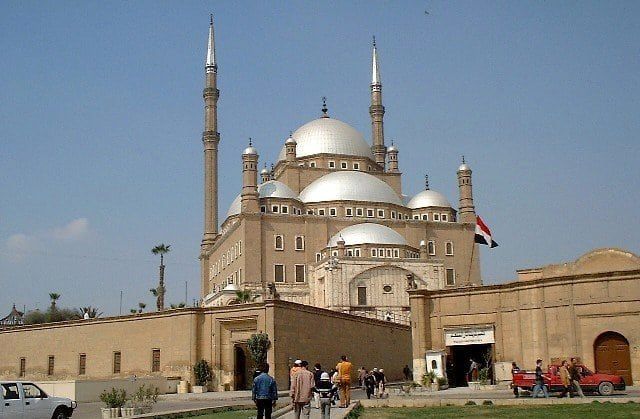One of the world’s greatest monuments to medieval warfare happens to be the Cairo Citadel. Located on Mokattam Hill in Cairo, it was home to the rulers of Egypt for 700 years. A highly visible landmark on Cairo’s eastern
skyline, it is located on a spur of limestone that had been detached from its parent Moqattam Hills, due to quarrying.
As far as accessing Cairo Citadel is concerned, visitors need to reach Cairo, which is well connected via air to all the major cities of the world. In Cairo, the Citadel is located on Street Sharia Salah Salem. Visitors ought to note that the Citadel is opened from 8am-4pm on all days. However, mosques are closed during prayers on Friday, so visitors should plan their visit accordingly.
Built during the Ayyubid Dynasty, it was originally conceptualised as a royal home and also as military barracks by the ruler Saladin. However, by the time its construction was complete, it was Al Malek El Kamel, who was the reigning king, and was the first to live in this palace. In the 1860s, the Citadel was no longer used as the seat of government as the ruling king Khedive Ismail moved into a new castle.
If legends are to be believed, Salah ad-Din chose the site for its healthy breeze. Apparently, he hung pieces of meat up all around Cairo. With the exception of the Citadel area, where it remained fresh for several days, the meat was spoilt everywhere else. Also, the location of the Citadel is such that it provides a strategic advantage both to dominate Cairo and to defend outside attackers.
From the nineteenth century on, the Cairo Citadel underwent six major reconstruction projects. The Mamluks further enlarged the complex, adding elaborate palaces. Under the Ottomans, the fortress was expanded westwards. A new main gate, the Bab al-Azab, was also added to the magnificent structure.
Today, except a part of the walls and Bir Yusuf, the well that supplied the Citadel with water, nothing remains of the original fortress. In all, there are three mosques at the Citadel of Cairo: Mosque of Al-Nasir Muhammad, Mosque of Suleiman Pasha and the Mosque of Mohamed Ali.
Mosque of al-Nasir Muhammad: Its construction began in 1318 and this mosque stands testimony to the beautiful Mamluk work of art. Moreover, the supporting columns around the mosque’s courtyard were collected from ancient Egyptian structures. Though the conquering Ottomans looted a lot of the original interior decoration off to Istanbul, visitors can still enjoy the beautifully crafted masonry and the controlled ornate work on the minarets.
Muhammad Ali Mosque: Built in memory of Muhammad’s oldest son Tusun Pasha who died in 1816, this mosque has dominated Cairo’s skyline for the past 150 years. The mosque took eighteen years to build and is modelled on classic Turkish lines. What makes this mosque significant is that it has two minarets. However, Ottoman law allowed only the sultan to build a mosque with two minarets. Thus, this was Muhammad Ali’s way of rebelling against the Ottomans.
The Cairo Citadel has a unique beauty of its own. A visit to the same will acquaint you with the culture of that era, It is definitely worth the visit. So when in Cairo, make it a point to include the Citadel in your itinerary!










